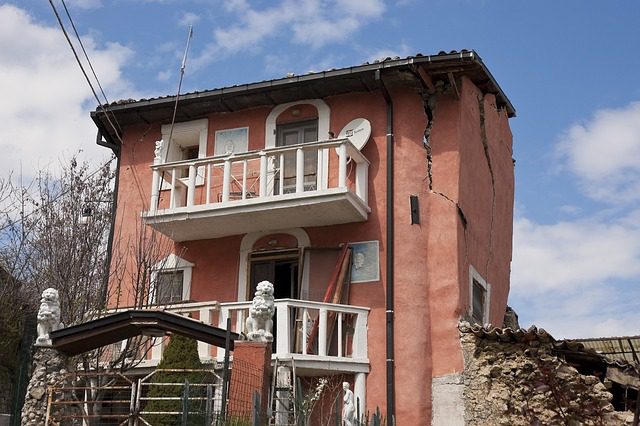Depending on the magnitude, earthquakes can unleash cataclysmic damage to your home and the surrounding property. A professional company can help make installations to better protect your home.
Light fixtures smash to the ground, glass windows and doors explode, furniture and bookshelves topple, and cabinet doors swing wildly, releasing china, dishes, and other breakables to shatter on the floor. Gas lines can break or leak, roof supports can collapse, and even the masonry and foundation can weaken or break.
To prevent worst-case scenarios, American Dream Management in Hartford advises is a good idea to enact preventive measures and have a plan of action for earthquakes to limit potential damage. This foresight can reinforce your home and protect your family from one of nature’s most terrifying natural disasters.
Table of Contents
Personal Safety
Before you even begin working with your home, there are a few steps you should take to ensure the general safety of you and your family.
Take the time to research your community’s preparedness actions to learn invaluable information about what you can do and where you can go in the event of an earthquake. This includes evacuation plans and possible community-safe houses.
Have an emergency kit of important medical supplies, clothes, food, water, and other daily necessities in case you have to leave on the fly and stay away from your house for an extended period of time.
Some of the most important concerns during an earthquake are the gas, water, and electric lines, which are at risk for leaks or shorts that can lead to more substantial damage, injuries, or even death.
Make sure that every member of the family knows where the earthquake gas shutoff valves are, how to do so, and where any necessary tools are located so that this can be done quickly if disaster strikes.
For best results, you can have an earthquake valve installed, which can detect significant magnitudes and automatically shut the valves off, ensuring that this important action is done immediately, even if you are not at your house when the earthquake begins.
Protecting Your Home from Earthquakes
There are many actions you can take to reinforce your home to limit the potential damage in the event of an earthquake:
Securing Objects
When the ground is shaking, unsecured objects on shelves, in cabinets, on the floor, and elsewhere in the house can potentially fall, causing destruction and possibly even injuries to those inside the house.
If you have a water heater, ensure that it is braced so that it will not budge. This is a legal requirement in many states, but if you discover yours is not, you can purchase a strap kit to keep it from becoming a dangerous projectile.
Expensive items such as computers, monitors, stereo equipment, and other accessories should be attached to desks in some way, whether using straps or bolts, to ensure that they do not slide off their respective surfaces.
Items on shelves are at particular risk. Try to keep heavier objects closer to the ground and, if possible, secure them solidly to the shelves. If this is not possible, you can acquire or modify existing shelves to create a lip that provides protection to keep these items from sliding off.
Safety cables are a good idea for large appliances, keeping them fastened to walls or other immobile objects.
For filing cabinets, bookcases, china cabinets, and other tall, standalone furnishings, bolting them to the walls can prevent them from toppling over. Latches and flexible fasteners can keep drawers, cabinets, and other openable compartments closed and secure.
Don’t forget to secure picture frames and other objects that decorate your walls!
Reinforcing Glass
Safety film can prove invaluable regarding windows, glass doors, and similar items, reinforcing the glass against shattering. Make sure you only apply the film to a single side, not both. Another option is to replace glass with plexiglass which is better able to withstand the effect of earthquakes.
Chandeliers, Lights, Ceiling Fans, and Other Hanging Fixtures

These types of items are dangerous from above. Since they are dangling free-style, the only way to properly secure them is by attaching them firmly to immobile elements of the house, such as the ceiling or walls.
The Federal Emergency Management Agency recommends using wires to secure these items to the ceiling, most often number 9 gauge wire. Ensure the wires are secured to the ceiling, not other suspended objects.
The Outside of the House
One of the first actions you need to take to protect the outside of your home is to look up. Are there extending tree branches or other objects, such as electrical poles, that could potentially fall on your roof or cause damage to your home?
If so, secure those items so they will not come loose from the ground, and prune any trees to eliminate branches that pose potential threats.
House Structure and Foundation
You likely will want a professional to evaluate what can be done to retrofit your home with earthquake protection. They can tell you whether the walls, foundations, garage, and other important structural aspects are sound or if they need attention.
For instance, some houses are not bolted to the foundation, meaning that the house itself can slide during particularly vigorous earthquakes. Some short walls adjacent to the foundation, known as “cripple walls,” may require bracing to keep them from sliding if the ground shakes.
Also, second-floor rooms, especially those over the garage, can benefit from enhanced structural improvements to add stability, as they do not have the direct benefit of the ground beneath them.
The Bottom Line
Your family’s safety should always come first, but reinforcing your house and taking preventative measures can significantly reduce any unfortunate damage or side effects resulting from earthquakes.
If you doubt any aspect of earthquake-proofing your home, do not hesitate to consult a professional structural engineer or another expert to evaluate your home and answer questions about protection techniques.
Featured Image by Angelo Giordano from Pixabay




